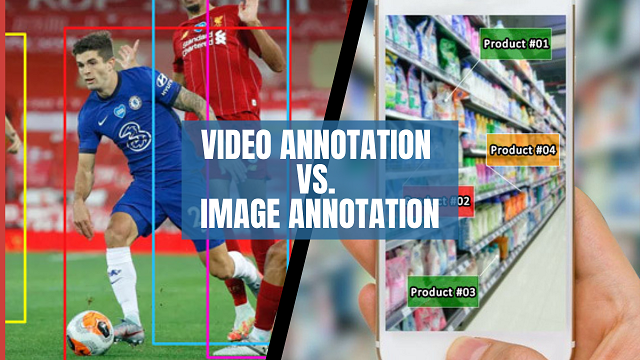Infosearch provides image annotation, video annotation and various other data annotation services for AI and ML. Outsource annotation services to us for accurate annotated datasets.
The foundation for training any model in computer vision and AI relies on annotation. If you want your car to drive itself, your face recognition to be accurate or your security system reliable, your model needs annotated data to learn from.
The main question is, should you apply video annotation or image annotation?
Even though both processes have the same aim, they offer different advantages and have their own set of issues. Let’s take a look at the differences, situations and pros and cons of each which will tell you which will be best for your project.
What Do We Mean by Image Annotation?
Image annotation means giving each static image a label. All images are marked separately and the annotations can detail:
• Bounding boxes are implemented.
• Polygons
• Keypoints
• Segmentation masks are used.
• The type of class each example belongs to
It is ideal for teaching an artificial intelligence to recognize items, settings and aspects in images, without taking movement or context into account.
What Do We Mean by Video Annotation?
Video annotation, by comparison, is the act of marking sequences of frames. Annotations extend from one frame to another, recording both where an object is and how it interacts.
Advanced video annotation covers the following:
• Following objects through different shots
• Temporal event tagging is one of the examples.
• Segmenting every frame of a video
• Finding the pose of a person in motion
Comparison Chart
| Feature | Image Annotation | Video Annotation |
| Data Format | Just a single frame | An uninterrupted series of frames (follows one after another in a video) |
| Temporal Context | None | Preserved (motion, continuity) |
| Annotation Volume | Lower | Higher (Multiple frames pierce every object in a lager, single volumetric collection) |
| Use Cases | Sorting an item, discovering what it is | Following it while learning its behavior |
| Annotation Effort | Simpler, faster | More complex, often slower |
| Model Type | Still image-based models | Temporal or spatiotemporal models |
It’s important to know how and when image annotation should be used.
Select image annotation when your application needs to:
• Object detection takes place in environments where things rarely change such as monitoring retail shelves or scanning documents.
• Image classification can be used in medicine and for looking at images from satellites.
• Recordings do not require monitoring of any motion or facial expressions.
• You sometimes need only simple datasets for rapid prototyping
Pros:
• Annotation is simpler and quicker
• Needs less space to be stored and less computing to be completed
• Scrum is cost-effective for projects that involve fewer than 50 people.
Cons:
• Has no sense of time reference.
• It is difficult to track anything that happened before
When it’s necessary to describe an event, use video annotation.
Apply video annotation in your project if it meets the following:
• The ability to detect and identify human actions is important for security and sports.
• Systems that use object tracking are used in autonomous vehicles and drones.
• Finding out the location of joints in moving positions
• Being able to detect when falls, gestures or interactions occur
Pros:
• Keeps movement in the film constant
• Lets us see and analyze attitudes and interactions more closely
• Increases the accuracy when following objects and in scenes that are not static
Cons:
• Annotation takes a greater amount of time and effort.
• More capacity and computational power are required.
• The industry has access to better tools and knowledge.
A good solution is to try a hybrid approach.
It is often found that hybrid approaches work best in actual project situations. Start by labeling images to create a basic model fast. When you want to do behavior analysis, track motion or make your bot perform in real-time situations, use video annotation to mark and explain your actions.
Final Thoughts
What you want your AI to learn will help you understand whether image annotation or video annotation is better. If your scenes are fixed and you want to work quickly and simply, choose image annotation. If your model should recognize objects in motion, follow along or watch sequences of activities, using video annotations is the recommended approach.
Having trouble figuring out or setting up an annotation process? We’re ready and willing to guide you as you plan your strategy.
Contact Infosearch for your services.








Recent Comments